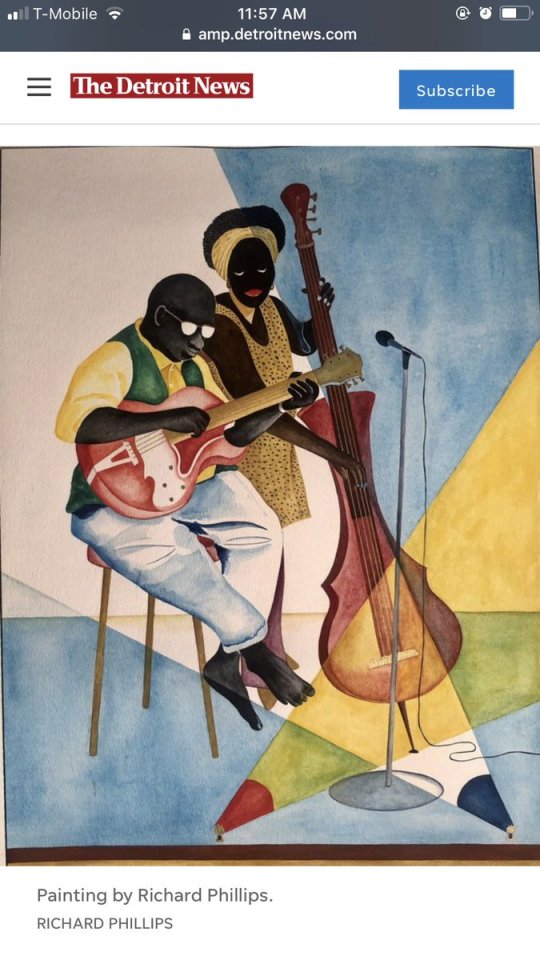Shocking

shocking
More Posts from Oracleofthepast and Others
First Aid Basics
I just got certified in CPR and First Aid last month with the American Heart Association. I wanted to share this information with you, because a lot of what we see on TV is not at all accurate as to what you’re supposed to do to actually help someone. Here are some of the topics that were covered:
First Aid Basics
Here are the steps you should follow when addressing a situation where a person may be injured/unconscious:
Check to make sure the scene is safe- you are no help to anybody if you also get hurt
If the person is responsive: “Are you okay?”
If they are unresponsive, hit their shoulders hard and yell: “Are you okay?” to see if you can rouse them
Phone 911 and put the phone on speaker (you can delegate this task to somebody else if you’re not alone)
Have somebody get a First Aid kit (don’t leave the person if you’re by yourself unless the 911 operator tells you to)
Is the person conscious? Unconscious?
Check them for any obvious signs of injury
Check them for medical jewelry
Remember
Time is of the essence! Be decisive and confident.
Don’t be afraid to call for help and assign people tasks
You can only perform CPR on a flat service. If a person needs CPR and is on a bed or in a chair, move them to the floor immediately. Don’t worry about hurting their head or anything, if they don’t get CPR immediately, their life expectancy is significantly less. (See my CPR post for full details)
Do not move the person unless the area they’re in is unsafe. If you have to move the person, drag them by their clothes and pull them to safety.
Adult Choking
There are both mild and severe cases of adult choking. In a mild case, the person choking will be able to make a sound or cough loudly. Typically these cases resolve themselves.
Ask: “Are you choking? Can I help you?”
If the person cannot make a sound or cough in response, they are suffering from severe choking.
Walk around back of the person and put your arms around them
Make a fist with your dominant hand
Place your fist slightly above the belly button and below the chest bone.
Grasp the fist with your other hand
Give quick upward thrusts
If the person is overweight or pregnant, put your arms around the person’s armpits.
If you are unsuccessful in removing the blockage, the person will quickly become unresponsive. You will need to perform adult CPR and call 911.
After chest compressions (see above link) check person’s mouth to see if the thing they choked on is visible. If it is visible, remove it. Never going digging around in someone’s mouth.
Amputation
Call 911 and put the phone on speaker
Get a First Aid kit
Both these steps can be delegated to someone else if they’re around
Put gauze on the wound and apply pressure until the bleeding stops
Do not remove the gauze if it’s bled through- this will remove any blood clots that have formed.
If the gauze is bled through, add more gauze on top and keep applying pressure until the bleeding stops
Clean the amputated part with water
Warp the amputated part with dressing
Put the amputated part in a small plastic bag
Get a larger plastic bag and fill it with equal parts ice and water
Put the small plastic bag inside the large plastic bag
Label the bag with person’s name and time of the injury
Asthma (How to Operate an Inhaler)
People diagnosed with asthma will typically be aware of it and may have an inhaler on them. If someone has an asthma attack:
Ask them: “Are you okay? Do you need your inhaler?”
The person will probably be able to give some sort of indication in response
If they need their inhaler:
Locate the inhaler
Put the medicine (metallic capsule pictured below) in the inhaler if it is not already in there, it will click into place
Shake the inhaler to activate the medicine
Attach the mouth piece if it’s unattached (not all inhalers have one, it is not pictured below)
Remove the cap (cap is darker blue piece pictured below)
Have the person put their head back
Put the inhaler in the person’s mouth
Push down on the canister and have them breathe out slowly
They should begin to feel relief immediately, but you should still have them sit down and take it easy for a while
Call 911 if they are still having difficulty breathing after the inhaler has been administered

Bee Sting
Usually bee stings present only mild irritation and pain. If the person stung has a severe allergic reaction, you will need to call 911.
Get a first aid kit
Scrape away the bee stinger and venom sack using a credit card or something similar in nature
Wash the affected area with lots of soap and running water
Wrap a bag of ice in a towel and place it over the affected area for 20 minutes or until the pain is gone
Watch the person for up to 30 minutes for signs of an allergic reaction
Call 911 if they present any classic allergy symptoms
Bleeding from Nose
Have the person lean their head forward
Get a First Aid kit
Or have someone else get one
Have the bleeding person apply pressure to the bridge of their nose using gauze from the First Aid kit
Do not remove the gauze if it’s bled through- this will remove any blood clots that have formed.
If the gauze is bled through, add more gauze on top until the bleeding stops
Call 911 if the bleeding lasts longer than 15 minutes
Heat Cramps/Dehydration
Can lead to heat exhaustion! These typically happen when someone is dehydrated and tries to do lots of physical activity.
Have the person sit down and cool off
Have them drink something with sugar and electrolytes
Water will work in a pinch but sugary drinks and gatorade are preferred
Heat Exhaustion
Call 911 and put the phone on speaker
Have the person lie down
Cool the person by pouring water on them or wetting them with wet cloths until they begin to act normally
Have them drink something with sugar and electrolytes
Water will work in a pinch but sugary drinks and gatorade are preferred
Wait with them until help arrives
Opioid Overdose
My instructor said that these will often happen in an unsafe or an isolated environment. Always check to make sure that the scene is safe- look out for needles.
Naloxone is used to revive people who have overdosed on opioids. If you find someone who has overdosed on opioids you happen to have naloxone on you and know how to administer it, the American Heart Association recommends that you use it instead of waiting for help to arrive.
Responsive:
Yell for help
Call 911 and put the phone on speaker
Wait with the person until help arrives
Unresponsive
Yell for help
Call 911 and put the phone on speaker
Perform five cycles of adult CPR
Wait for help

Seizure
Seizures are abnormal electrical activity in the brain. Typical seizure symptoms: spasms, muscle rigidity, and unconsciousness. Seizures typically last between 60-90 seconds before the person gains consciousness.
Do NOT touch the person who is having a seizure
Do NOT put anything in their mouth
Call 911 and put the phone on speaker
If there are people around, ask them to get a First Aid kit while you wait with the person having the seizure
Don’t leave the person having a seizure if you are alone
Move objects away from the person having the seizure so that they don’t knock into them
If possible, place a small towel/pad underneath the person’s head
If the person starts vomiting, turn them over on their side so that they don’t choke
If possible use gloves and an eye mask from a First Aid kit to avoid exposure to bodily fluids
After they come to, they may be bleeding from the mouth.
Use gauze from a First Aid kit to stop the bleeding
Have them apply pressure with the gauze until the bleeding stops
Stay with the person until help arrives
Splints
Splints should be significantly longer than the injured area. They’re used to constrict movement, so the person is injured should not be able to move freely once the splint is applied. Splints are use to treat broken/dislocated bones. It’s very difficult to tell if a bone is actually broken or just dislocated, so don’t worry about it and just splint the thing.
Call 911 and put the phone on speaker
Get a First Aid kit
Both these steps can be delegated to someone else if they’re around
Put on gloves/eye glasses from the First Aid kit to avoid contamination from bodily fluids
Cover exposed wound area with gauze
Do not remove the gauze if it’s bled through- this will remove any blood clots that have formed.
If the gauze is bled through, add more gauze on top until the bleeding stops.
Place a strip of rigid material underneath the injured area
Use gauze/dressing from the First Aid kit to secure the splint by wrapping material above and below the injured area
Never tie material directly over the injury
Have the person stay as still as possible until help arrives

Stroke
Strokes are caused from blockage/bleeding from things like blood clots. Typical signs of a stroke: face drooping (or numbness), arm weakness (or numbness), and speech difficulty. There is nothing much you can do except wait with the person and try to make them comfortable until help arrives.
Call 911 and put the phone on speaker
Note the time that the stroke symptoms began (this will help hospital technicians)
Stay with the person until help arrives
Tourniquets
Some First Aid kits will come with a pre-made tourniquet. If your kit does not have a tourniquet you can make one fairly easily. Tourniquets should only be used for injuries where the person is squirting blood. No squirting blood? Use a splint.
Call 911 and put the phone on speaker
Get a First Aid kit
Both these steps can be delegated to someone else if they’re around
Put on gloves/eye glasses from the First Aid kit to avoid contamination from bodily fluids
Fold cloth or a bandage so that it’s long and an inch wide
Wrap the the bandage/cloth two inches above the wound
Never apply a tourniquet bandage/cloth on a joint (like elbows or knees).
Find a small stick
Place the small stick atop the cloth/bandage and tie it there
You can now turn the small stick to tighten the cloth/bandage
Have the injured person lay down and try to move as little as possible
Do not remove the tourniquet- even if the bleeding stops.
Wait until help arrives.










What Happened To Kendrick Johnson and Why People Are Demanding Answers Even Now
On Jan. 11, 2013, the body of 17-year-old Kendrick Johnson was found in the most unusual of circumstances: upside-down and rolled up in a school gym mat. The mysterious death of Kendrick Johnson was initially ruled an accident by law enforcement asserting the ridiculous theory that Johnson must have accidentally fallen into the center of the mat while reaching for a sneaker
Some inconsistencies in the case:
the black and white gym shoe that lay on the ground below Kendrick Johnson, the one he was presumed to be reaching for, was lying on top of a pool of blood, but there was no blood on the shoe itself.
A hoodie and a pair of orange and black gym shoes were also found lying on the floor of the gym
traces of blood on the wall nearby that wasn’t Kendricks.
A private pathologist revealed Kendrick Johnson had suffered hemorrhaging on the right side of his neck, which meant that he likely died from blunt force trauma
the second autopsy revealed that some of Johnson’s organs were missing and in their place, his body had been stuffed with newspaper.
A whole hour of footage from the gym was missing, right at the time which would have shed light on what happened that day
HOW YOU CAN HELP:
- Donate to his family! (they're nowhere near their goal)
- Sign the petition
SPREAD THIS AND HIS STORY!!!
Follow for more news
#StayWoke
#WhatHappenedToKendrickJohnson




*************** ATTENTION ***************
Video captured of peaceful protester Justin Howell being carried unconscious after sociopath police officers shot several bullets, hitting him in the head. Police tell protesters to bring him to them so he could receive help only to be shot with more bullets.
(WARNING: VIDEO MAY BE TOUGH TO WATCH)
How You Can Help:
Donate to his GoFundMe for his recovery
Sign this petition to fire Police Chief involved
Austin’s city manager Spencer Cronk has the authority to fire the police chief Brian Manley. CONTACT HIM AND DEMAND JUSTICE
Email: Spencer.Cronk@austintexas.gov
phone number: 512-974-2200
Source
Follow here for more news
#WakeUp







Can we support him please?!
In linguistics, a filler is a sound or word that is spoken in conversation by one participant to signal to others that he/she has paused to think but is not yet finished speaking. These are not to be confused with placeholder names, such as thingamajig, which refer to objects or people whose names are temporarily forgotten, irrelevant, or unknown.
In Afrikaans, ah, em, and eh are common fillers.
In Arabic, يعني yaʿni (“I mean”) and وﷲ wallāh(i) (“by God”) are common fillers.[2][3][4]
In American Sign Language, UM can be signed with open-8 held at chin, palm in, eyebrows down (similar to FAVORITE); or bilateral symmetric bent-V, palm out, repeated axial rotation of wrist (similar to QUOTE).
In Bengali, mane (“it means”) is a common filler.
In Catalan, eh /ə/, doncs (“so”), llavors (“therefore”), and o sigui (“it means”) are common fillers.
In Czech, tak or takže (“so”), prostě (“simply”), jako (“like”) are used as fillers. Čili (“or”) and že (“that”, a conjunction) might also be others. A person who says jako and prostě as fillers might sound a bit simple-minded to others.[5]
In Danish, øh is one of the most common fillers.
In Dutch, eh, ehm, and dus are some of the more common fillers.
In Esperanto, do (“therefore”) is the most common filler.
In Filipino, ah, eh, ay, and ano are the most common fillers.
In Finnish, niinku (“like”), tota, and öö are the most common fillers.
In French, euh /ø/ is most common; other words used as fillers include quoi (“what”), bah, ben (“well”), tu vois (“you see”), and eh bien (roughly “well”, as in “Well, I’m not sure”). Outside of France, other expressions are tu sais (“you know”), t’sais’veux dire? (“you know what I mean?”), or allez une fois (“go one time”). Additional filler words include genre (“kind”), comme (“like”), and style (“style”; “kind”)
In German, a more extensive series of filler words, called modal particles, exists, which actually do give the sentence some meaning. More traditional filler words are äh /ɛː/, hm, so /zoː/, tja, and eigentlich (“actually”)
In Hebrew, eh is the most common filler. Em is also quite common.
In Hindi, matlab (“it means”) and “Mah” are fillers.
In Hungarian, common filler words include hát (well…) and asszongya (a variant of azt mondja, which means “it says here…”).
In Icelandic, a common filler is hérna (“here”). Þúst, a contraction of þú veist (“you know”), is popular among younger speakers.
In Indonesian (Bahasa Indonesia), anu is one of the most common fillers.
In Italian, common fillers include “tipo” (“like”), “ecco” (“there”) and “cioè” (“actually”)
In Irish Gaelic, abair /ˈabˠəɾʲ/ (“say”), bhoil /wɛlʲ/ (“well”), and era /ˈɛɾˠə/ are common fillers, along with emm as in Hiberno-English.
In Japanese, common fillers include eetto, ano, sono, and ee.
In Kannada,Matte for also,Enappa andre for the matter is are the common fillers.
In Korean, eung, eo, ge, and eum are commonly used as fillers.
In Lithuanian, nu, am and žinai (“you know”) are common fillers.
IN Maltese and Maltese English, mela (“then”), or just la, is a common filler.
In Mandarin Chinese, speakers often say 这个 zhège/zhèige (“this”) or 那个 nàge/nèige (“that”). Another common filler is 就 jìu (“just/precisely”).
In Norwegian, common fillers are øh, altså, på en måte (“in a way”), ikke sant (literally “not true?”, “no kidding”, or “exactly”), vel (“well”), and liksom (“like”). In Bergen, sant (“true”) is often used instead of ikke sant. In the Trøndelag region, skjø’ (“see?” or “understand?”) is also a common filler.
In Persian, bebin (“you see”), چیز “chiz” (“thing”), and مثلا masalan (“for instance”) are commonly-used filler words. As well as in Arabic and Urdu, يعني yaʿni (“I mean”) is also used in Persian. Also, eh is a common filler in Persian.
In Portuguese, tipo (“like”) is the most common filler.
In Romanian, deci /detʃʲ/ (“therefore”) is common, especially in school, and ă /ə/ is also very common (can be lengthened according to the pause in speech, rendered in writing as ăăă), whereas păi /pəj/ is widely used by almost anyone.
In Russian, fillers are called слова-паразиты (“vermin words”); the most common are Э-э (“eh”), это (“this”), того (“that”), ну (“well”), значит (“it means”), так (“so”), как его (“what’s it [called]”), типа (“like”), and как бы (“[just] like”).
In Serbian, znači (“means”) and ovaj (“this”) are common fillers.
In Slovak, oné (“that”), tento (“this”), proste (“simply”), or akože are used as fillers. The Hungarian izé (or izí in its Slovak pronunciation) can also be heard, especially in parts of the country with a large Hungarian population. Ta is a filler typical of Eastern Slovak and one of the most parodied features.
In Slovene, pač (“but”, although it has lost that meaning in colloquial, and it is used as a means of explanation), a ne? (“right?”), and no (“well”) are some of the fillers common in central Slovenia, including Ljubljana.
In Spanish, fillers are called muletillas. Some of the most common in American Spanish are e /e/, este (“this”), and o sea (roughly means “I mean”).[6], in Spain the previous fillers are also used, but ¿Vale? (“right?”) and ¿no? are very common too.
In Swedish, fillers are called utfyllningsord; some of the most common are öhm, ja (“yes”), ba (comes from “bara”, which means “just”), asså or alltså (“therefore”, “thus”), va (comes from “vad”, which means “what”), and liksom and typ (both similar to the English “like”).
In Ukrainian, ой /ɔj/ is a common filler.
In Urdu, yani (“meaning…”), falan falan (“this and that”; “blah blah”), umm, and aaa are also common fillers.
In Telugu, ikkada entante (“Whats here is…”) and tarwatha (“then…”) are common and there are numerous like this.
In Tamil, paatheenga-na (“if you see…”) and apparam (“then…”) are common.
In Turkish, yani (“meaning…”), şey (“thing”), “işte” (“that is”), and falan (“as such”, “so on”) are common fillers.
In Welsh, de or ynde is used as a filler (loosely the equivalent of “You know?” or “Isn’t it?”). Ym… and Y… are used similarly to the English “um…”.
the maps coined a new term to call themselves
P.E.A.R,aka “pro-expression, anti-repression" was a term coined by well known pedophile 4-lung stay safe y’all,and block these sick freaks
Archive.org is facing a lawsuit



tldr: the Internet Archive/WayBack Machine is super important in term of archived content, billions of stuff are on there, and with the current event happening in the world like stated above,without this tool, it will be hard to properly document what took place. It will be easy for certain people to rewrite history. Dont let them.
DONATE HERE (post dont get much exposure with working links sorry)
archive.org/donate/
^^^^^^^^^^^^^
IF YOU CANT DONATE THEN PLEASE SPREAD THE INFO
On twitter,tumblr,facebook,heck,anywhere you want,this needs to be talked about !

I spent my two-hour layover mourning the two halves of my Ovation. Help me save others from the same fate!

Reblog this picture of me holding a Family Size box of Honey Nut Cheerios? I’d really appreciate it.
-
 aquameme reblogged this · 2 weeks ago
aquameme reblogged this · 2 weeks ago -
 mybendystraw reblogged this · 4 weeks ago
mybendystraw reblogged this · 4 weeks ago -
 dahmermaniac liked this · 1 month ago
dahmermaniac liked this · 1 month ago -
 ocdcrimejunkie reblogged this · 1 month ago
ocdcrimejunkie reblogged this · 1 month ago -
 lesbianradfemopinions reblogged this · 1 month ago
lesbianradfemopinions reblogged this · 1 month ago -
 justabookwormnerd liked this · 1 month ago
justabookwormnerd liked this · 1 month ago -
 sillygoose04 liked this · 1 month ago
sillygoose04 liked this · 1 month ago -
 prairiesofnebraskaa liked this · 1 month ago
prairiesofnebraskaa liked this · 1 month ago -
 tccconfessions2hear liked this · 1 month ago
tccconfessions2hear liked this · 1 month ago -
 karlkleballs liked this · 1 month ago
karlkleballs liked this · 1 month ago -
 matricider reblogged this · 1 month ago
matricider reblogged this · 1 month ago -
 chudlover liked this · 1 month ago
chudlover liked this · 1 month ago -
 columbine-d reblogged this · 1 month ago
columbine-d reblogged this · 1 month ago -
 zerogxreday liked this · 1 month ago
zerogxreday liked this · 1 month ago -
 neonotoniawightii reblogged this · 1 month ago
neonotoniawightii reblogged this · 1 month ago -
 queerforsmiggles liked this · 1 month ago
queerforsmiggles liked this · 1 month ago -
 luvleyangeldust liked this · 1 month ago
luvleyangeldust liked this · 1 month ago -
 cherryyroxxx reblogged this · 1 month ago
cherryyroxxx reblogged this · 1 month ago -
 cherryyroxxx liked this · 1 month ago
cherryyroxxx liked this · 1 month ago -
 pipeb0mb liked this · 2 months ago
pipeb0mb liked this · 2 months ago -
 wanide69 liked this · 2 months ago
wanide69 liked this · 2 months ago -
 kaynsu3 liked this · 2 months ago
kaynsu3 liked this · 2 months ago -
 ziezulasejas liked this · 2 months ago
ziezulasejas liked this · 2 months ago -
 please-juststaydead liked this · 2 months ago
please-juststaydead liked this · 2 months ago -
 thewanderingairs liked this · 2 months ago
thewanderingairs liked this · 2 months ago -
 holeinyourhead reblogged this · 2 months ago
holeinyourhead reblogged this · 2 months ago -
 holeinyourhead liked this · 2 months ago
holeinyourhead liked this · 2 months ago -
 bobbyd1966 liked this · 2 months ago
bobbyd1966 liked this · 2 months ago -
 sizzlingcandyjellyfishhhhhh liked this · 2 months ago
sizzlingcandyjellyfishhhhhh liked this · 2 months ago -
 whyamistillawake liked this · 2 months ago
whyamistillawake liked this · 2 months ago -
 ghost-faces liked this · 2 months ago
ghost-faces liked this · 2 months ago -
 hatsunecalvin liked this · 2 months ago
hatsunecalvin liked this · 2 months ago -
 them0rticiansflame liked this · 2 months ago
them0rticiansflame liked this · 2 months ago -
 wellsaidsblog liked this · 2 months ago
wellsaidsblog liked this · 2 months ago -
 3st6lbremastered liked this · 2 months ago
3st6lbremastered liked this · 2 months ago -
 stolensquabbles liked this · 2 months ago
stolensquabbles liked this · 2 months ago -
 vigilantkilliforniakatholixxx liked this · 2 months ago
vigilantkilliforniakatholixxx liked this · 2 months ago -
 one-hit-boy-wonder liked this · 2 months ago
one-hit-boy-wonder liked this · 2 months ago -
 aliaa-j liked this · 2 months ago
aliaa-j liked this · 2 months ago
